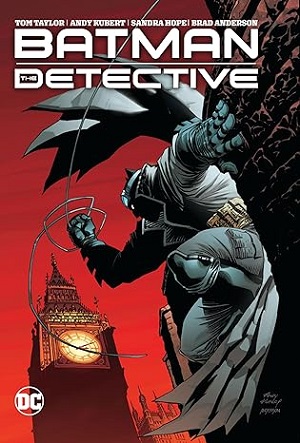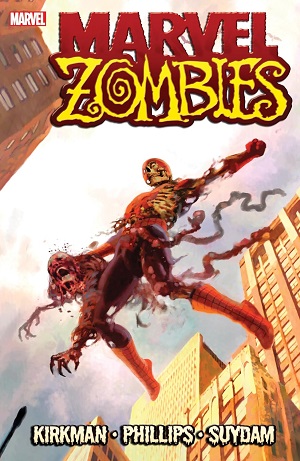
Deadly Little Secrets: The Minister, his Mistress, and a Heartless Texas Murder
By Kathryn Casey
The crime:
When Kari Baker was found dead by her husband Matt on April 7, 2006 it was judged to be a suicide by drug overdose, mainly because that is what Matt, a Baptist minister, told the authorities had happened. He also showed them a suicide note. Kari’s family, however, didn’t believe she would have killed herself and pursued a wrongful death civil case against Matt. After much prodding the police filed charges and, with Matt’s mistress testifying against him, he was found guilty of murder and sentenced to 65 years in prison.
 The book:
The book:
There’s a blurb of praise from Ann Rule on the cover of Deadly Little Secrets and I think that’s entirely apt as Kathryn Casey has always struck me as the Texas version of Ann Rule. What I mean is that while both authors cover a fair bit of ground, their real specialty is doing these deep dives into marriages and relationships that hit the rocks in a big, bad way. And I’m not knocking that, since I think there’s a real value in digging into such stories, precisely because they are so commonplace. If you’re going to be murdered, chances are pretty good it will be at the hands of a domestic partner. It’s certainly a lot more likely than being killed by a stranger. So it helps to be familiar with some of the warning signs.
Matt Baker’s murder of his wife Kari was a terrible tragedy but at the same time it was nothing much out of the ordinary. I was even a bit surprised that national news programs like 48 Hours and 20/20 ran segments on it, as I would have thought it was mainly a story of local interest. But I guess the “murdering minister” angle, which is all that sets it apart from countless similar stories of husbands killing their wives, played well in the media.
That a so-called “man of god” could go bad, or be bad in the first place, didn’t strike me as being news. I’m more concerned at how many people there still are who think individuals in positions of trust and authority are deserving of so much respect and deference. Cops, doctors, and clergy, to take just the most obvious examples, are no better or worse than anyone else out there. Given that, and the fact that at over 400 pages this is a book that goes into Matt and Kari’s break-up in granular detail, what lessons can we learn?
I think the red flags with Matt were all the obvious ones. He was overly possessive and controlling. He had no friends. He couldn’t stick with any one job for very long, usually being dismissed for some inappropriate conduct that wherever he was working wanted to keep hushed up. He was a sex addict. None of this meant he was bound to end up killing his wife, but they were bad signs. Only being a minister bought him a lot of trust, and Kari never wanted to believe the worst.
The other thing that stood out to me for it’s not being remarkable was the way the police investigation got off on the wrong foot and then only got worse because people in authority never want to admit making a mistake. By sheer coincidence I read David Wilson’s A Plot to Kill right after Deadly Little Secrets and both books deal with murders involving drug overdoses that were originally considered to be suicides or accidents so that the authorities didn’t have to perform an autopsy. When Wilson tried to get a copy of the coroner’s report on Peter Farquhar he was shut down in a way that he clearly felt miffed by. But I think he also understood why he was getting that treatment, and it’s not because he was a famous author. There are few rules more absolute when it comes to corporate culture than CYA (Cover Your Ass), and the police are nothing if not a corporate bureaucracy.
As with any bureaucracy, the failure of the police in this case wasn’t the result of corruption or incompetence but instead could mainly be put down to simple laziness. In my experience this is the Occam’s Razor of explaining how things go wrong in most organizations. It’s not the fault of bad people so much as people who can’t be bothered doing anything more than the bare minimum to keep their jobs. In this case, the police were offered an easy explanation for Kari’s death so they just took it at face value (a typewritten suicide note?) and called it a day. No need to bother with an investigation.
Because there was so little physical evidence collected the trial itself turned into a very near-run thing. Matt might have even been able to beat it if he’d known enough, or been better advised, to keep his mouth shut. You should always keep your mouth shut in such situations. This was the takeaway I offered in my review of The Count and the Confession: “Innocent or guilty, you have nothing to gain by talking to the police. It won’t do you any good and could get you in a lot trouble.” Talking to the police almost sent Beverly Monroe to prison for life, and she was innocent. It’s what nailed Matt, who otherwise had a good chance of walking out of court a free man.
Noted in passing:
Guy James Gray, Matt’s defense lawyer, got angry with Matt when he found out that Matt had been lying to him about not having an affair with the younger woman he hooked up with after Kari’s death. Indeed, Gray was so furious that he filed a motion to be taken off the case, citing a “serious breach of confidence.”
That didn’t sit well with Gray, who’d convinced himself early on that he had an innocent client. Suddenly Gray, like the prosecutors, had Baker pegged as a liar. “I think the judge should have let me leave,” he says, with a frown. “From that point on, I never talked to Baker unless I legally had to. I wanted nothing to do with him.”
This isn’t how it works. Or at least it’s not how it’s supposed to work. In the first place, Matt had only confessed at this point to lying about his affair, he hadn’t admitted to killing Kari so was still at least potentially an “innocent client.” But more than that, a defense attorney has a professional duty to present his or her client’s case as best they can, and the question of whether their client is actually guilty or innocent doesn’t come into it. For Gray to suggest he gave up on the case, a sort of “quiet quitting,” when he wasn’t allowed to resign (which would have been very difficult given how late in the day it was) is something I found really surprising.
Takeaways:
One can make any number of stupid mistakes in killing someone and still get away with it. Matt Baker was no criminal genius and should have been caught dead to rights but for the fact that he was a minister. What finally tripped him up though was the fact that his wife had a lot of close family members and friends who weren’t going to let the matter of her death slide and who had the resources to pursue Matt when the police and DA didn’t want to get involved.
There’s a reason so many serial killers manage to keep murdering for years without getting caught. They tend to prey on individuals who are socially isolated or who exist on the fringes of society. Runaways, homeless people, the down-and-out. Killing people with stronger connections to their community is a lot riskier.
True Crime Files
 The biggest story in the development of movies in the twenty-first century, at least the first quarter of it, was the domination of comic-book action films. Not just the MCU, but almost any action movie started seeming more and more like a comic book through the heavy use of CGI and generic comic-book tropes.
The biggest story in the development of movies in the twenty-first century, at least the first quarter of it, was the domination of comic-book action films. Not just the MCU, but almost any action movie started seeming more and more like a comic book through the heavy use of CGI and generic comic-book tropes.





